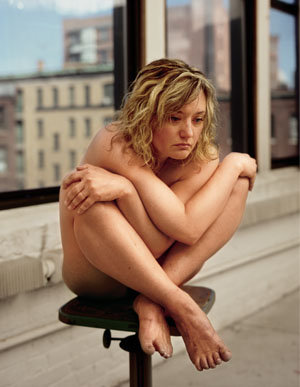Harriet Casdin-Silver
dal 2/3/2007 al 23/3/2007
Segnalato da
2/3/2007
Harriet Casdin-Silver
Gallery NAGA, Boston
Laser Transmission Holograms, Reflection Holograms, Digital Prints. The works glory in the physical forms of their female subjects, in the ability of their bodies to express spirit, and in the varieties of color and mood.

Laser Transmission Holograms, Reflection Holograms, Digital Prints
The international doyenne of holography, Harriet Casdin-Silver, presents new digital prints and classic holograms in a major exhibition at Gallery NAGA. Widely acknowledged as the most important artist in the history of the medium – holography was theoretically conceived in the 1940s but not achieved in practice until the 1960s1 – Casdin-Silver has maintained studios in Boston for over thirty years, and her current Fort Point studio figures prominently in her recent work. The show features the first public exhibition of two laser transmission holographic works created by Casdin-Silver in 1992 at the Royal College of Art in London. These holographic “masters,” whose image is reconstituted by a beam of laser light passing through them as they are suspended in space, are the source material from which are made white light reflection holograms, whose more conventional presentation – hung on a wall and lit by a halogen bulb – has made them a more familiar form.
The works Ian and Katherine of Orange present nudes whose bodies are folded up onto and around themselves, a classic Casdin-Silver pose, and are each shown as both laser transmission masters and as white light reflection holograms derived from those masters. The new work shown by Casdin-Silver, who turned 82 this month, is a suite of four large and very large digital print portraits shot in her studio. The works glory in the physical forms of their female subjects, in the ability of their bodies to express spirit, and in the varieties of color and mood Casdin-Silver derives from her studio setting and her Fort Point neighborhood looming through her windows. The subjects themselves are Sarah Maline, an art historian who has written on photography and holography, Casdin-Silver herself in a sly infectious self-portrait entitled 80+1, and Rebecca Rodger, the artist’s 20-year-old granddaughter, who appears both in a life-size six-foot piece and in Venus of Willendorf, 2007, in which she assumes a pose reminiscent of both the art history 101 icon and the signature Casdin-Silver piece Venus of Willendorf, 1991.
Commenting on these works, Casdin-Silver talked about the transition from her recent practice of shooting holographic portraits, for which subjects sit on a slowly rotating platform while photographer Daniel van Ackere, who also worked on the digital portraits, operates an automatic camera firing off 220 exposures. “It was very freeing, this whole experience. I was able to move around. I didn’t have to use my turntable. I discovered these wonderful buildings outside my window.” About the six-foot portrait Rebecca she said, “It’s probably the largest print I’ve ever made. I couldn’t get this big with holography. I’ve always wanted to cover the wall. She’s everything I want a woman to be. She’s very grounded. Her legs are so strong. She’s solid. She’s courageous. She’s effervescent. She’s having a good time. Whose granddaughter is going to pose nude? Sally Mann?”
Gallery NAGA
67 Newbury Street - Boston
Free admission



